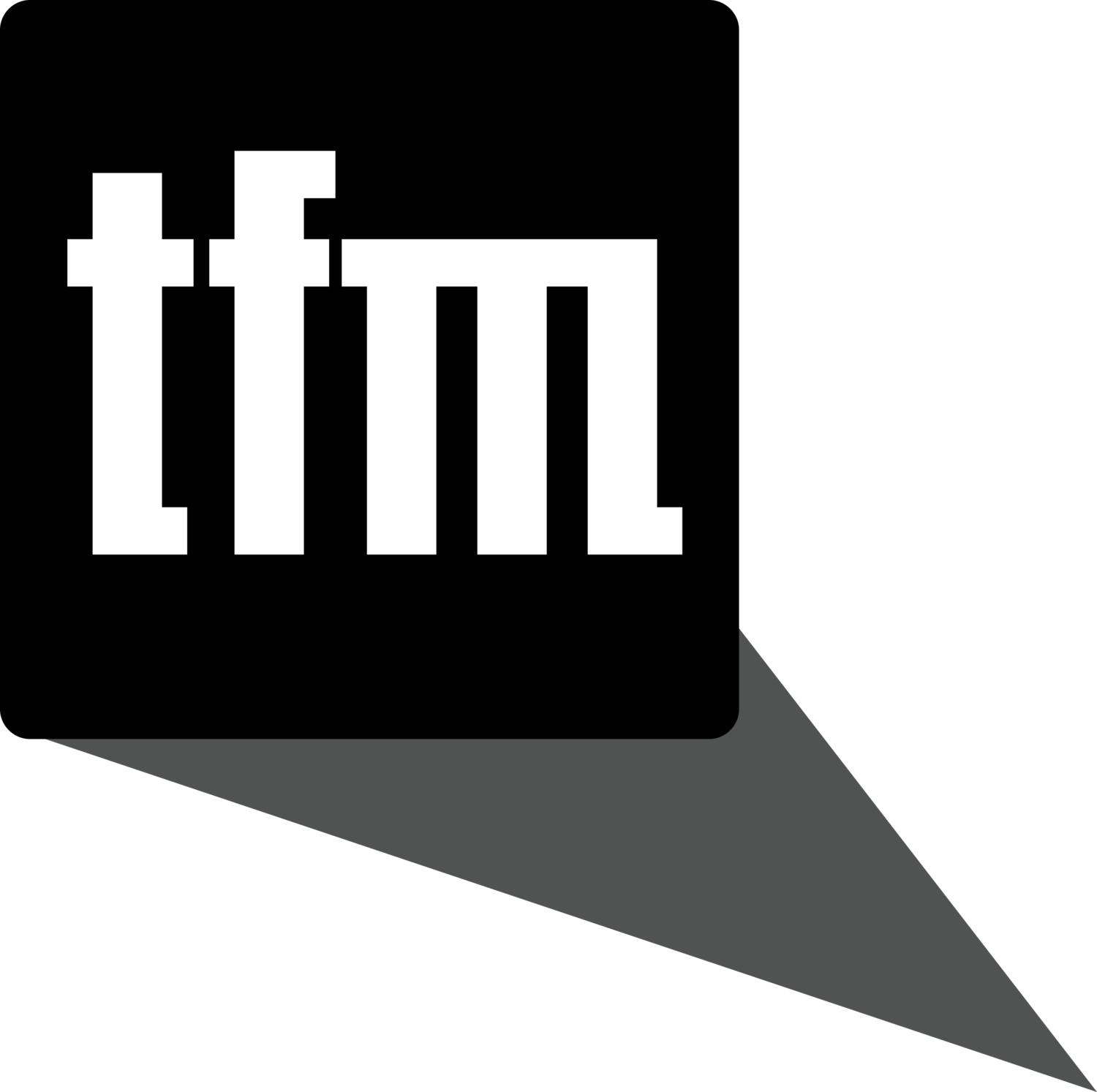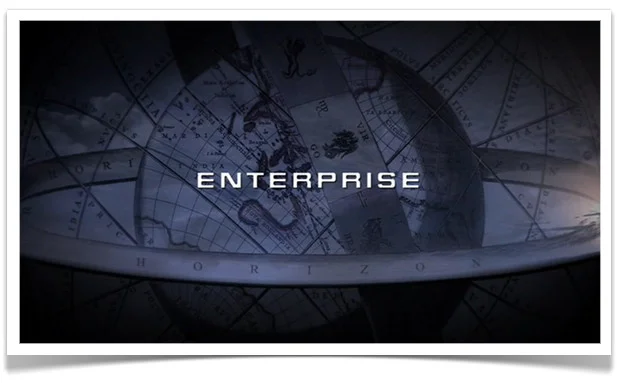An audio version of this Captain’s Log is available.
by Christopher Jones
The fifth live-action Star Trek series came about at an interesting time. It was a time that for some may be seen as the twilight of the franchise—at least the franchise that so many of today’s fans grew up with. I myself was feeling a bit of fatigue creeping into Trek back in 2001. The theaters had played host just a few years earlier to one of the bigger flops in the movie series, Insurrection, the television incarnation of Star Trek was in a bit of a strained relationship with UPN, and yet the studio wanted to go to the well one more time. What direction that next Trek would take, however, was up in the air.
Feeling that the 24th century was becoming too crowded, Rick Berman and Brannon Braga decided to go back in time and tackle the untold history of the days before Kirk. That trip was a rough ride that ended prematurely. Now, ten years later, whether this was ultimately a success is debatable. The easy—and most common—answer in that it was not.
In a future article I’d like to talk about Enterprise and its place in the franchise now that enough time has passed that we can see it for what it is rather than just how it held up week to week in the ratings. Before that, however, I’d like to dip into my archives and share with you what I said way back in 2001, after screening “Broken Bow.”
Tomorrow Is Yesterday
The premise of Enterprise takes Star Trek into uncharted territory. After 18 years of life in the 24th century, we’re going back in time. A hundred years after the events of the film First Contact, interaction between the Vulcans and humans has resulted in a permanent Vulcan presence on Earth. But the Vulcans have not been entirely generous in sharing information and technology, and mankind is still being held back.
When a lone Klingon crash lands in Broken Bow, Oklahoma—the first ever seen by humans—a series of events transpires that thrusts mankind into deep space for the first time. Once en route to Qo’noS, the Enterprise encounters a genetically altered time-traveling race called the Suliban, who are apparently involved in some sort of temporal cold war using the unwitting Klingons as pawns. The Enterprise crew must see Klaang, the Klingon who crashed on Earth, safely back to Qo’noS to avert a Klingon civil war.
It’s a good setup for a series and sets into motion a number of familiar Star Trek elements right out of the gate. There are several themes running through “Broken Bow” that attempt to bring Star Trek into a concept that predates everything that we know as Star Trek, with the primary one being the adventure and uncertainty of setting out on one’s own.
Since first contact, the Vulcans have been feeding humans information about the larger world piece by piece—like a parent. They haven’t given humans much freedom to do as they please with regard to venturing out into space. Stressing that mankind must first let go of their provincial attitudes and volatile nature, the Vulcans have held back just enough information to prevent humans from developing the Warp 5 engine—which would free them from the shackles of their own star system. This engine has just been completed as “Broken Bow” begins.
But like a child who has patiently waited under their parents’ wings and can wait no more, the humans take the opportunity afforded by the Klingon incident to leave the nest. Just as in real life, there are pitfalls along the way. The Enterprise crew nearly find themselves dead on a number of occasions (something that most of us don’t have to deal with, fortunately), and they encounter things they never imagined. From cave dwellers to spacefarers, humans finally complete one stage of existence and enter another. As the opening theme song says, “It’s been a long road, getting from there to here.”
Where No One Has Gone Before
This first step into a larger world brings Star Trek back to its roots. In TOS there is a sense of wonder as Kirk and his crew explore strange news worlds. Over the years the Star Trek universe has become very crowded, and while new planets and races may be encountered along the way, a feeling of just another day at the office has crept into Starfleet. With Enterprise it’s all new—if not for us then at least for our heroes.
In addition to this primary theme of fresh-eyed exploration, “Broken Bow” also touches on genetic manipulation and the difficult necessity of accepting new ideas and expanding the mind.
It is unavoidable to think of The Original Series with Kirk and Spock when thinking about Enterprise. But “Broken Bow” is much more complex than the stories from TOS, and it is certainly on par with—and really exceeds—the premieres of the last three series. The inclusion of the time traveling Suliban throws in an interesting twist. Their temporal cold war is something I expect we will be seeing throughout the series—or at least over the first few seasons.
The primary strength of the first episode is the writing. Brannon Braga has made a name for himself over the past few years as an excellent screenwriter, and his hand shows here. It shows not only in the traditional Trek elements, but in the ways in which this show takes more chances than its predecessors. It’s sexier, more down-to-earth, and yet retains the message that Roddenberry sought to share. In fact, it does it better in many ways than than either Deep Space Nine or Voyager.
Visually, “Broken Bow”—and Enterprise as a whole—is a real delight. The letterbox format adds a new dimension to the TV series, giving it a cinematic flare, and the lighting and camera work are the best of Trek. Of particular note in “Broken Bow” is the snowy planet Rigel X. The whipping wind and swirling snow have a realism that rises above anything previously seen on Star Trek.
The Abandoned
If I am looking for flaws in “Broken Bow” there are a couple of items that catch my eye. The nature of the Suliban time incursions and their overall purpose remains more or less a mystery. Is this a flaw or just design? Why do the Suliban want to throw the Klingon Empire into chaos? I’ll chalk this one up to design, though perhaps this could have been better integrated into the story. I expect that this will all be revealed gradually over the first few seasons. But a little more information would have prevented the slight feeling that the whole thing is just a plot device to complicate the voyage to Qo’noS.
Another item where I felt the writers just called it a day is the revelation that Klaang was carrying some kind of data in his blood. The scene in the chambers of the High Council in which the blood is examined is a total letdown. What was the information about? Couldn’t a little more have been revealed? After sitting through the two-hour story, you can’t help but feel a little gypped at the end.
Waking Moments
Overall though Enterprise is off to a promising start and “Broken Bow” is the first chapter in the Star Trek saga. To be precise it is not the start of Trek history—which is actually our own history that begins to split with reality in the 1990s—but it is the beginning of Starfleet and everything that comes to mind when we think of Star Trek. In setting out to give a proper beginning to this vast universe, Berman and Braga have managed to stay surprisingly true to Gene Roddenberry’s original vision. I’m not sure that Gene would approve of the shower/decontamination scene—which prompted one magazine writer to say that Enterprise has “more underwear shots than a Hanes commercial”—but his message and ideals come through loud and clear in “Broken Bow.” The premiere episode has set the bar high for the series, and has revitalized a franchise that was growing tired with age. Star Trek is off to a great (new) start.
So as Archer said to Mayweather when it was time to set sail… “Let’s go.”





